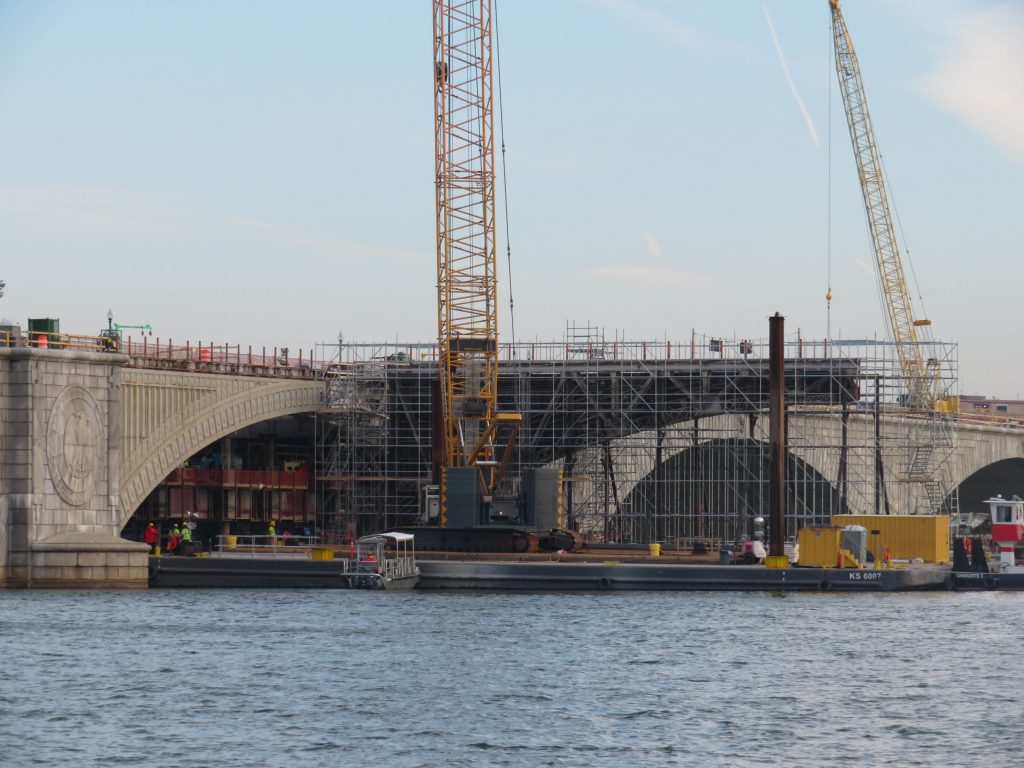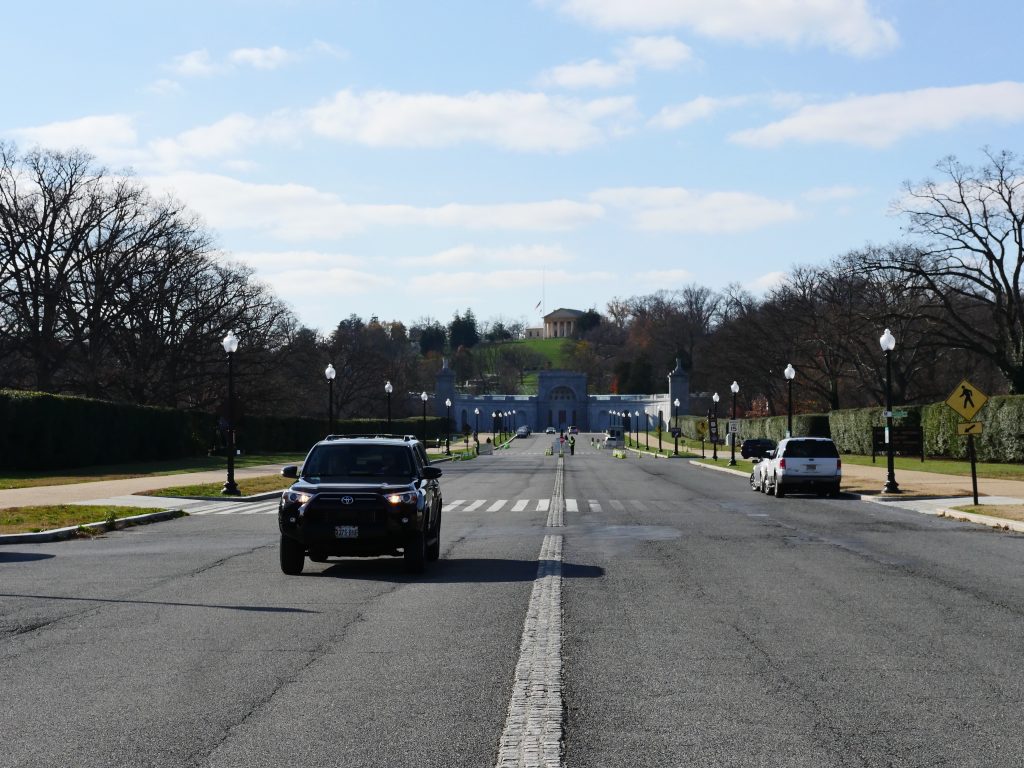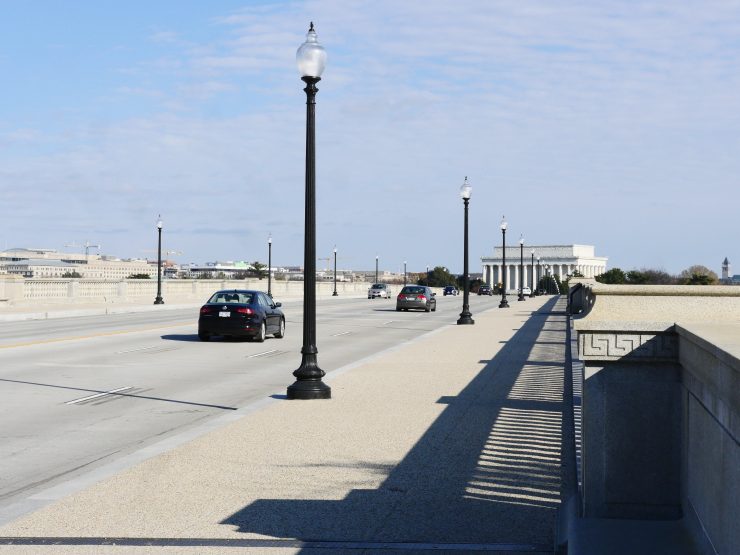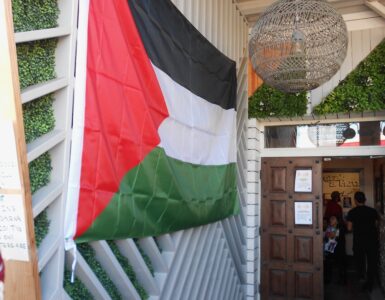Arlington commuters were delighted on Monday when they discovered all six lanes were open on the Arlington Memorial Bridge since its renovation began two years ago.
Portions of the six lanes were closed and shifted during construction to keep at least one lane open in both directions. The orange cones were lifted one last time before an opening ceremony took place on Friday, Dec. 4. All lanes were open on Monday for the first time during the morning, noon and evening weekday traffic patterns.
Kiewit Infrastructure Company, the contractor responsible for completing the project, estimates over 68,000 vehicles as well as thousands of cyclists and pedestrians travel over the bridge each day.

In order for the bridge to support that level of traffic, Kiewit performed a complete rehabilitation, first by making immediate repairs to the bridge then by replacing the bridge span superstructure, bridge deck, sidewalks and travel lane surfaces. The work completed will allow 90 more years of use of the bridge.
The Arlington Memorial Bridge was not the only bridge in Arlington with structural issues. Data created and compiled by the Federal Highway Administration in 2020 show that 2.4% of all bridges in Arlington have structural defects and are in need of repair.
Commuters did not experience the typical noon time bottleneck of traffic on the bridge. Suzanne Fitzgerald, a George Washington University student from Arlington, observed the change during her walk over the bridge Monday.
”I was very excited to walk over the bridge and see the wider, more safe new sidewalks,” said Fitzgerald, who also commutes over the bridge by car. “I drove more and walked less during the construction because I thought I was going to get hit by a car walking on the narrow, sometimes blocked, sidewalks.”
The Arlington Memorial Bridge was built in 1932 not only to accommodate foot and vehicle traffic between Virginia and Washington, but also to memorialize the unity of a country that was divided during the Civil War, according to the National Park Service.
The idea of a bridge spanning over the Potomac River to symbolize the reunification of the North and the South following the Civil War was first pitched by President Andrew Jackson nearly 150 years ago in 1833.

Later in 1921, President Warren G. Harding moved the project along after getting stuck in a traffic jam on his way to the dedication ceremony for the new Tomb of the Unknown Soldier.

Luis Beruff, an architect who has lived in Arlington for 10 years, came out to see the bridge without the construction equipment and orange road barriers for the first time. An avid jogger who routinely crosses the bridge during his runs, Beruff admires the bridge as a neoclassical style monument.
“It’s wonderful to see the grand marblest design of the bridge and it reminds me of Paris’s Arc de Triomphe,” Beruff said.
Beruff said he personally sees the bridge “as a kind of a spiritual landmark in the sense that people use it for getting to work, working out, and for its aesthetic beauty.” He also said the bridge has a lot of symbolism, connecting the Lincoln Memorial to Arlington National Cemetery.
Lee Harris, another long-time Arlington resident, was walking her dogs over the bridge Monday. “I was pleasantly surprised to see much more pedestrian space to walk my dog or ride my bike,” Harris said.
She also came to the bridge because of the stories her mom told about witnessing the John F. Kennedy funeral procession over the bridge.
“When I come to the bridge I can visually see the Kennedy funeral movement to Arlington Cemetery,” Harris said.
“I can feel goose bumps all over.”
















Add comment